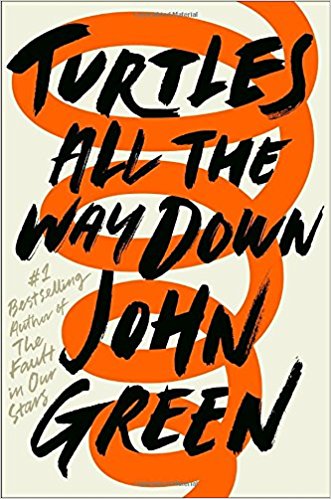Turtles All the Way Down is a prime example of John Green’s remarkable work

More stories from Abby Stead

The name John Green brings about reminders of his past young adult triumphs: New York Times best sellers that transitioned into block-buster movies. But six years after the release of his most famous work, The Fault in Our Stars, Green has returned, bringing back his effortlessly complex voice that entranced audiences with his new book Turtles All the Way Down.
Although I am admittedly a big fan of Green’s work, attempting to criticize his work was not difficult. I searched for archetypes from his past novels to appear, or storylines to repeat, or for characters to be replicated, and found none.
Turtles All the Way Down follows the story of 17-year-old Aza Holmes, a high school student who lives with obsessive compulsive disorder (OCD). The book follows her journey with her daring best friend Daisy, who is determined to discover the whereabouts of rogue billionaire Russell Pickett for a $100,000 reward when she finds that Aza knows his son, Davis Pickett.
Even in introductions, Green makes Aza’s OCD-induced thought-spirals relatable to even those who haven’t experienced them. The phrase from where the novel gets its title even is an expression of the “infinite regress” problem, which is described by the idea that Earth is flat and resting on the shell of a turtle, and beneath that turtle a larger turtle, and beneath the next a larger one, and so on. When wondering what the final turtle is standing on, it is joked that it is “turtles all the way down.” This paradox reflects the entire perspective of the novel, with Aza’s thought-spirals spinning, strangling, and suffocating her, as well as creating a metaphor throughout the novel which must be read to be understood.
After turning the first page, it was off to the races. Whether in Aza’s internal monologue or her humorous repartee with friends, the reader is immediately taken into a new world. The unique, yet relatable, feelings expressed by Aza supplement the story’s already phenomenal writing.
Many authors use a very similar voice throughout their works, but Green breathes a new life into each character. From Aza’s well translated thought-spirals, to Daisy’s adventurous and Star Wars-loving personality, the characters transcend their literary life-span and create memories in the reader’s head. I found myself wanting to come back to these characters and feel once more the freshness of their world.
The vivid imagery melts on the reader’s tongue; everything from Aza’s view of the cut on her finger (which she must check for infection frequently), to her depiction of her relationships with her friends and family seem to be like powdered words that dissolve into an image in the audience’s minds.
Green, who also experiences OCD, has described this novel as his most personal, even though it’s about a teenage girl. His overwhelming ability to capsulize the emotion of youth gives hope to the younger generation that there are adults who wholly understand modern day teenage-hood.
Turtles All the Way Down may never reach the commercial successes of Green’s past works, but it’s easy to say that it is probably my favorite of his novels. The lessons learned through experiencing life through characters like Aza teach an important lesson of empathy, and that lesson being wrapped in a mystery only makes this story more rich in its complexity.

Abby Stead is a junior and is entering her first year as a writer on The Central Trend. Her interests include Coldplay, choir, playing the piano, music...























































































